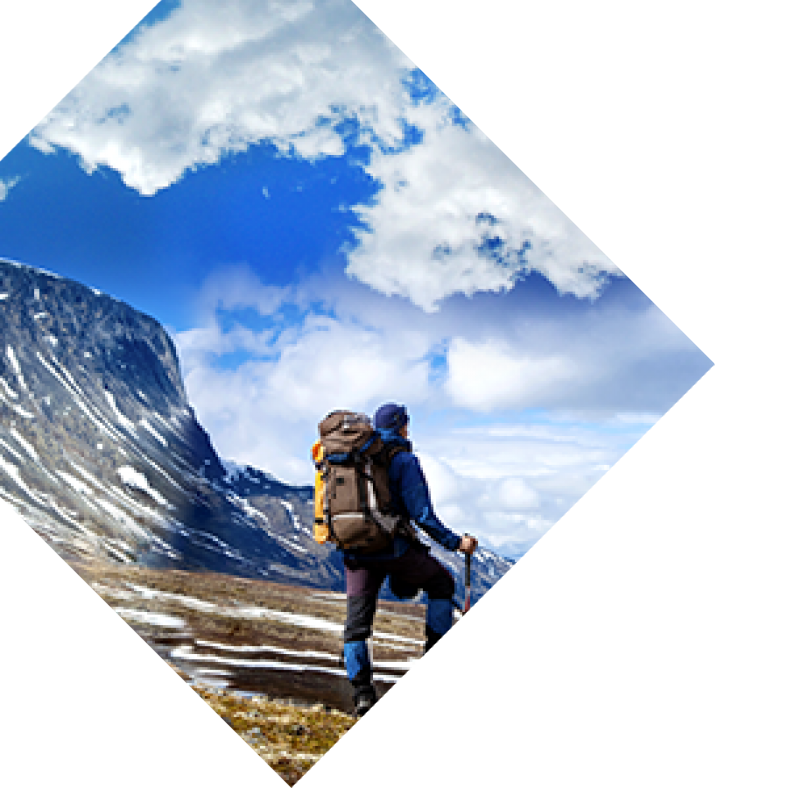Before moving from the Midwest to the Pacific Northwest almost four years ago, I'll admit I only vaguely knew of Mount Rainier. After all, it’s the most prominent and glaciated mountain in the lower 48 states and the highest peak in Washington State. I knew enough that I wanted to climb to its summit—but I didn’t yet know how, when, or really why. What I didn’t realize was how Mount Rainier’s surrounding backcountry—rather than its summit—would be where I’d most richly experience this mountain. In the winter months, especially, the miles and miles of sweeping, snow-covered terrain offer endless possibilities to explore and get lost in the best of ways. 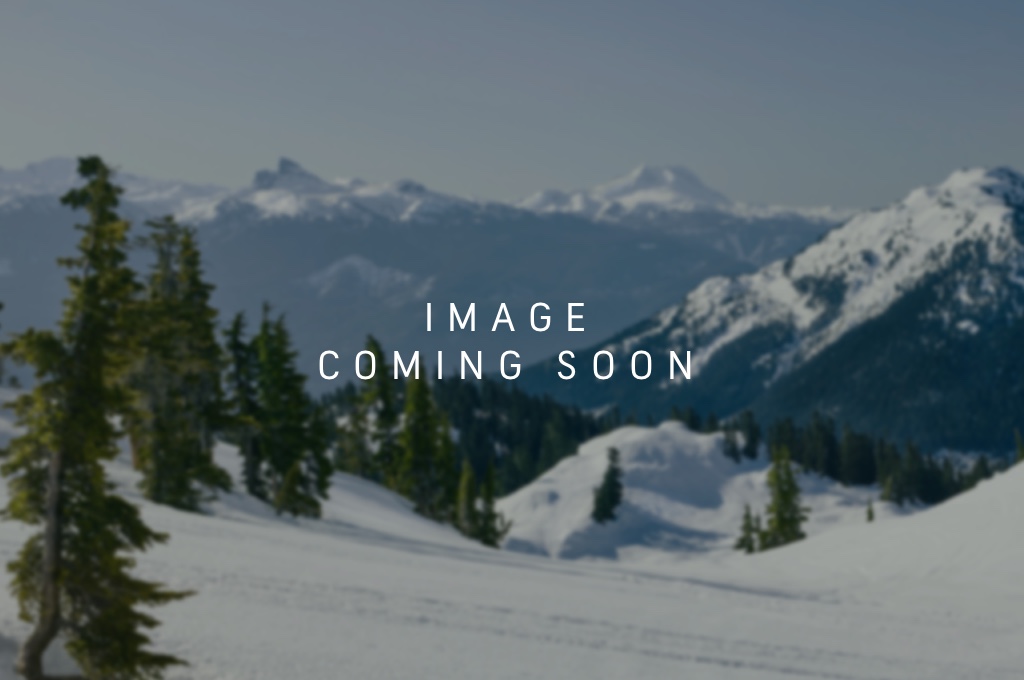 Earlier this winter, I started my day in a way I often do: I woke up in our Seattle home and stepped into the living room. I peered through our southeast-facing window, hoping to spot the silhouette of the great mountain on the horizon, some 50 miles away as the crow flies. I spotted it and smiled, knowing that later that day I’d be experiencing a much closer and more intimate view. I loaded up my car and took the short drive to meet my friend and fellow photographer, Steve Matera. Our plan was to drive to Mount Rainier and tackle a ski tour in its backcountry, making the most of a bluebird winter day. We set off, driving the highway out of the city and pointing the vehicle toward the behemoth that defines the Seattle skyline. Over several hours of driving, Mount Rainier grew larger and our anticipation for this world-class destination continued to spike. We eventually passed through the rustic park gates and drove the windy road to the mountain’s base, pulling into a near-empty parking lot covered in snow and ice. We brought the car to a halt and prepared our ski setups and packs for the adventures ahead.
Earlier this winter, I started my day in a way I often do: I woke up in our Seattle home and stepped into the living room. I peered through our southeast-facing window, hoping to spot the silhouette of the great mountain on the horizon, some 50 miles away as the crow flies. I spotted it and smiled, knowing that later that day I’d be experiencing a much closer and more intimate view. I loaded up my car and took the short drive to meet my friend and fellow photographer, Steve Matera. Our plan was to drive to Mount Rainier and tackle a ski tour in its backcountry, making the most of a bluebird winter day. We set off, driving the highway out of the city and pointing the vehicle toward the behemoth that defines the Seattle skyline. Over several hours of driving, Mount Rainier grew larger and our anticipation for this world-class destination continued to spike. We eventually passed through the rustic park gates and drove the windy road to the mountain’s base, pulling into a near-empty parking lot covered in snow and ice. We brought the car to a halt and prepared our ski setups and packs for the adventures ahead. 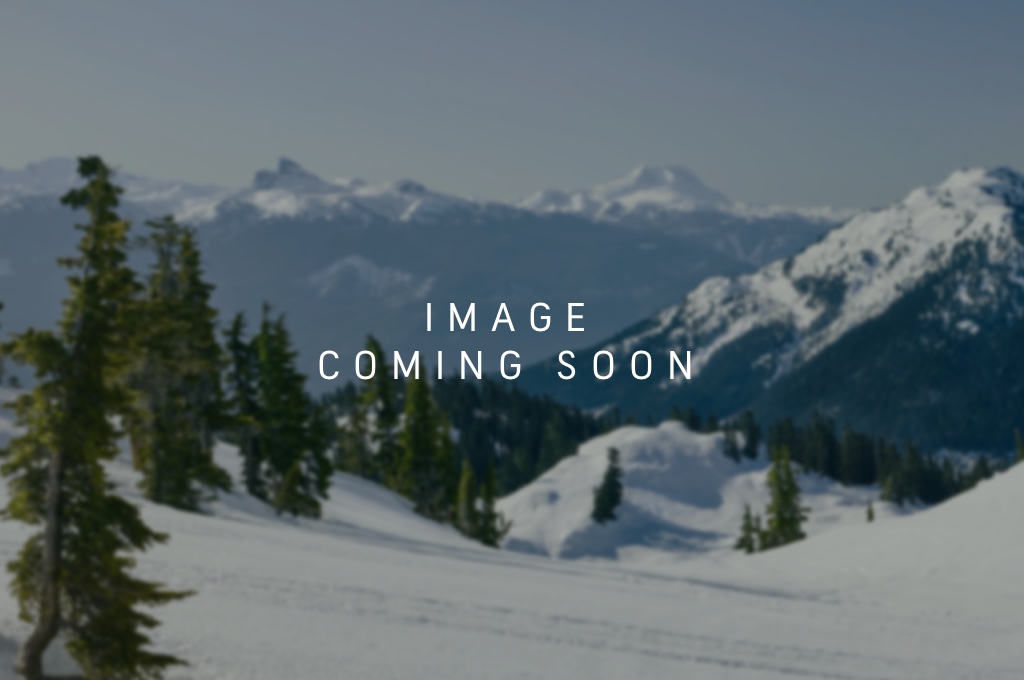 My gear kit reflected thorough planning from the day before. In addition to my backcountry skis, skins, boots, and poles, I packed essential avalanche gear (a beacon, probe, and shovel), as well as layers and more layers of clothing. On top of a simple base layer, I wore my lightweight hardshell, the Black Diamond Mono Point, to shield me from the wind and other elements. The shell was guaranteed to keep me dry from the solar-impacted snow surface, as well as “tree bombs” we passed under heavy, snow-laden branches. Following the adage “Be Bold – Start Cold,” I started with only these few light layers, knowing I’d be plenty warm as soon as we start our skin track. We checked that our avalanche beacons had plenty of battery, locked the car, and walked off onto glistening white snow, admiring the pure blue sky overhead. Stepping onto our skis and into our tech bindings, one boot at a time, we started our journey, skinning into the endless backcountry.
My gear kit reflected thorough planning from the day before. In addition to my backcountry skis, skins, boots, and poles, I packed essential avalanche gear (a beacon, probe, and shovel), as well as layers and more layers of clothing. On top of a simple base layer, I wore my lightweight hardshell, the Black Diamond Mono Point, to shield me from the wind and other elements. The shell was guaranteed to keep me dry from the solar-impacted snow surface, as well as “tree bombs” we passed under heavy, snow-laden branches. Following the adage “Be Bold – Start Cold,” I started with only these few light layers, knowing I’d be plenty warm as soon as we start our skin track. We checked that our avalanche beacons had plenty of battery, locked the car, and walked off onto glistening white snow, admiring the pure blue sky overhead. Stepping onto our skis and into our tech bindings, one boot at a time, we started our journey, skinning into the endless backcountry. 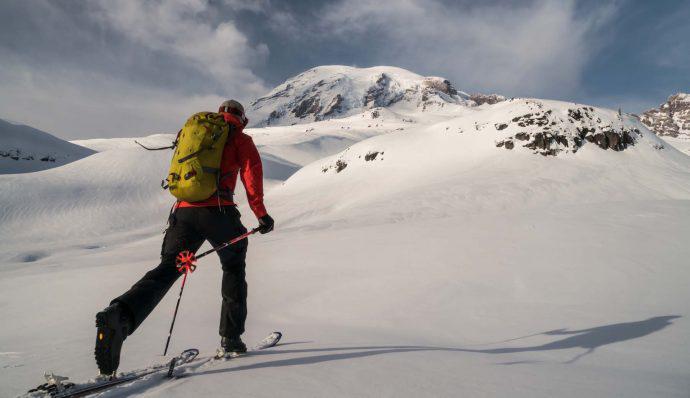 We passed through rolling gladed terrain with an eye out for signs of unstable snow. We saw and felt (under our skis) how the wind and direct sunlight had impacted this wintry environment. A firm snow crust rested atop the snowpack, and melting snow dripped from staggered trees. We knew the snow would melt again when temperatures dropped, but for the moment, I was grateful to have gear that kept me completely dry. We ascended through the trees and trekked into high alpine. Branches faded and we entered the lone company of rock, snow, and ice. Our bluebird sky has shifted to a sea of wispy clouds that drifted from the west. We saw no one. We heard no one. It was simply us and the faraway friend I gazed upon from my living room earlier that day, now much closer, as it ought to be.
We passed through rolling gladed terrain with an eye out for signs of unstable snow. We saw and felt (under our skis) how the wind and direct sunlight had impacted this wintry environment. A firm snow crust rested atop the snowpack, and melting snow dripped from staggered trees. We knew the snow would melt again when temperatures dropped, but for the moment, I was grateful to have gear that kept me completely dry. We ascended through the trees and trekked into high alpine. Branches faded and we entered the lone company of rock, snow, and ice. Our bluebird sky has shifted to a sea of wispy clouds that drifted from the west. We saw no one. We heard no one. It was simply us and the faraway friend I gazed upon from my living room earlier that day, now much closer, as it ought to be. 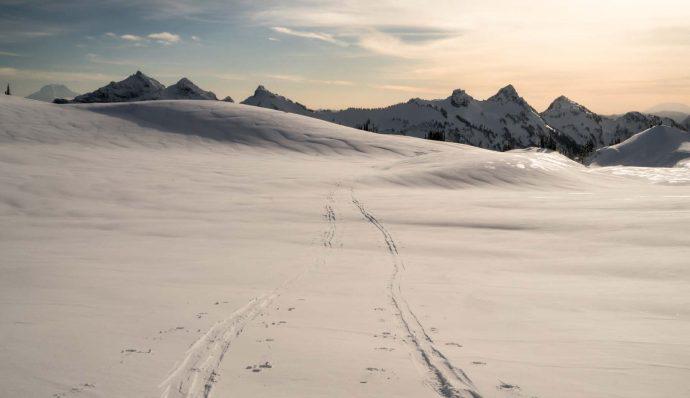 We noticed various patterns of sastrugi, long and irregular wavelike ridges of hard snow formed by the wind. The patterns and textures were beautiful, but we admired with caution, knowing the snow is a red flag of avalanche danger. We took note and carefully navigated the dreamy canvas before us. With no intention of climbing 14,410-feet to summit, we skin up and explored the surrounding solitude of the backcountry. Midday turned to late afternoon, and the daylight dwindled. Although we would have loved to stay, we knew our visit with Mount Rainier must come to an end. To our delight, the setting sun produced an array of vibrant colors that danced upon the horizon. Brilliant oranges and yellows emerged from south and west and we soaked up every second as we rip skins, locked in our boot heels, and started the ski back down.
We noticed various patterns of sastrugi, long and irregular wavelike ridges of hard snow formed by the wind. The patterns and textures were beautiful, but we admired with caution, knowing the snow is a red flag of avalanche danger. We took note and carefully navigated the dreamy canvas before us. With no intention of climbing 14,410-feet to summit, we skin up and explored the surrounding solitude of the backcountry. Midday turned to late afternoon, and the daylight dwindled. Although we would have loved to stay, we knew our visit with Mount Rainier must come to an end. To our delight, the setting sun produced an array of vibrant colors that danced upon the horizon. Brilliant oranges and yellows emerged from south and west and we soaked up every second as we rip skins, locked in our boot heels, and started the ski back down. 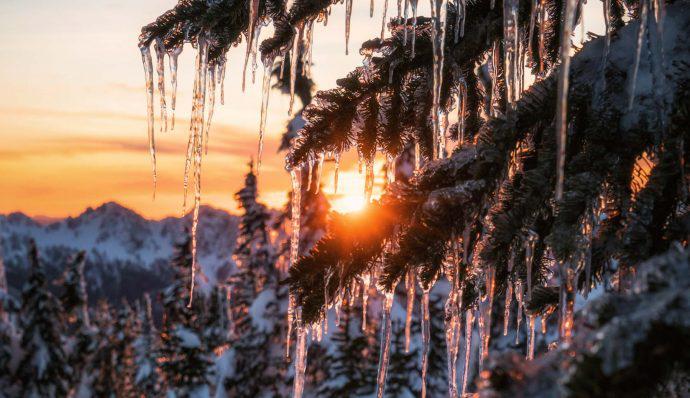 Winter days are short so the sun’s low-angled path across the southern sky created long-lasting sunsets. And on this particular day, it seemed to stretch on forever, like a grand finale to the perfect day of ski touring. Golden light seeped into the blue hue of late dusk. We dodged ice sheets and tree wells, skiing out of the alpine, back through the gladed terrain, and down to the parking lot. While a day in the wintry backcountry presented exposure to harsh elements and unique dangers (avalanche related and otherwise), a successful outing with a safe return is beyond rewarding and never to be taken for granted. We drove back to our homes in Seattle knowing very well the mountain will whisper from its throne, “come back soon.” Planning Your Next Winter Adventure?
Winter days are short so the sun’s low-angled path across the southern sky created long-lasting sunsets. And on this particular day, it seemed to stretch on forever, like a grand finale to the perfect day of ski touring. Golden light seeped into the blue hue of late dusk. We dodged ice sheets and tree wells, skiing out of the alpine, back through the gladed terrain, and down to the parking lot. While a day in the wintry backcountry presented exposure to harsh elements and unique dangers (avalanche related and otherwise), a successful outing with a safe return is beyond rewarding and never to be taken for granted. We drove back to our homes in Seattle knowing very well the mountain will whisper from its throne, “come back soon.” Planning Your Next Winter Adventure?

